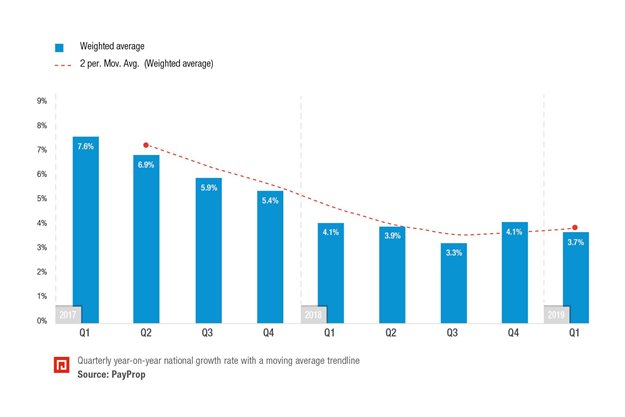
Rental market growth in SA remains on the cards
 |
"The election has been a source of uncertainty and volatility which has affected the property market and its growth. Reluctant buyers who are holding off purchasing a property ultimately need to live somewhere, and we'll likely see an increasing demand for rental property which will push up prices and lead to further rental market recovery in 2019," says Smuts.
Average rentals
As was noted in the annual PayProp Market Review, the average national rent moved up into the R7,500 - R10,000 price brand for the first time in Q4 2018. Nevertheless, almost a third of rents processed by PayProp still fell into the R5,000 - R7,500 category.
The Western Cape still weighs in as the most expensive province in which to rent, with an average rental of R9,030. Approximately 30% of rents in the Western Cape fall into the R5,000 - R7,500 category, with a further 30% priced above R10,000, including over 11% priced above R15,000 - the highest percentage in this band.
Out of all the provinces, North West has the biggest percentage of renters in any one bracket - 54.6% of tenants in the region rent for between R2,500 and R5,000. It also has the country's lowest average rent, at R5,031, and the smallest percentage of rentals over R15,000.
"The data shows enough to be cautiously optimistic about continual recovery in the rental market after the signs we've seen over the last few months," say Smuts. "Following on from the end of a two-year downward trend in rental growth rates, agents should try to focus on avoiding high-risk tenants and interrogate affordability in their assessment of possible candidates."
Source: www.bizcommunity.com
Author Bizcommunity
